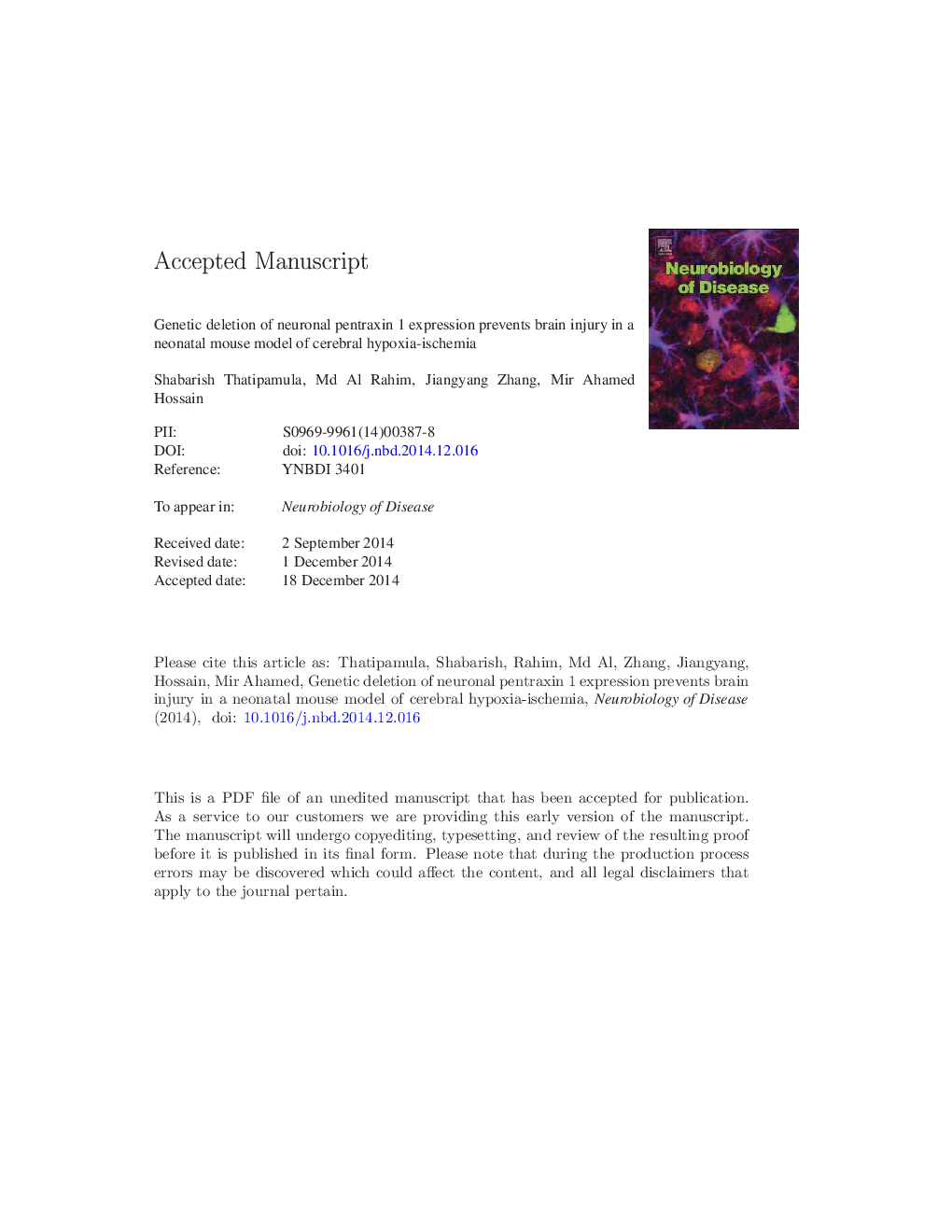| Article ID | Journal | Published Year | Pages | File Type |
|---|---|---|---|---|
| 6021841 | Neurobiology of Disease | 2015 | 50 Pages |
Abstract
Neonatal hypoxic-ischemic (HI) brain injury is a leading cause of mortality and morbidity in infants and children for which there is no promising therapy at present. Previously, we reported induction of neuronal pentraxin 1 (NP1), a novel neuronal protein of the long-pentraxin family, following HI injury in neonatal brain. Here, we report that genetic deletion of NP1 expression prevents HI injury in neonatal brain. Elevated expression of NP1 was observed in neurons, not in astrocytes, of the ipsilateral cortical layers (I-IV) and in the hippocampal CA1 and CA3 areas of WT brains following hypoxia-ischemia; brain areas that developed infarcts (at 24-48Â h), showed significantly increased numbers of TUNELÂ â(+) cells and tissue loss (at 7Â days). In contrast, NP1-KO mice showed no evidence of brain infarction and tissue loss after HI. The immunofluorescence staining of brain sections with mitochondrial protein COX IV and subcellular fractionation analysis showed increased accumulation of NP1 in mitochondria, pro-death protein Bax activation and NP1 co-localization with activated caspase-3 in WT, but not in the NP1-KO brains; corroborating NP1 interactions with the mitochondria-derived pro-death pathways. Disruption of NP1 translocation to mitochondria by NP1-siRNA in primary cortical cultures significantly reduced ischemic neuronal death. NP1 was immunoprecipitated with activated Bax [6A7] proteins; HI caused increased interactions of NP1 with Bax, thereby, facilitating Bax translocation to mitochondrial and neuronal death. To further delineate the specificity of NPs, we found that NP1 but not the NP2 induction is specifically involved in brain injury mechanisms and that knockdown of NP1 only results in neuroprotection. Furthermore, live in vivo T2-weighted magnetic resonance imaging (MRI) including fractional anisotropy (FA) mapping showed no sign of delayed brain injury or tissue loss in the NP1-KO mice as compared to the WT at different post-HI periods (4-24Â weeks) examined; indicating a long-term neuroprotective efficacy of NP1 gene deletion. Collectively, our results demonstrate a novel mechanism of neuronal death and predict that inhibition of NP1 expression is a promising strategy to prevent hypoxic-ischemic injury in immature brain.
Keywords
Related Topics
Life Sciences
Neuroscience
Neurology
Authors
Shabarish Thatipamula, Md Al Rahim, Jiangyang Zhang, Mir Ahamed Hossain,
